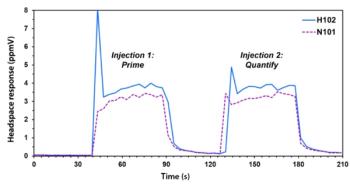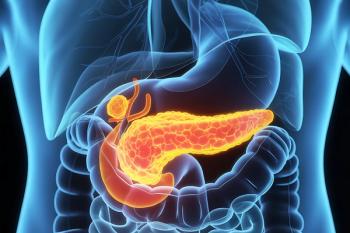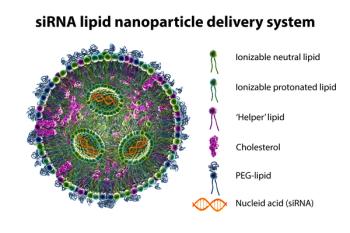
- Special Issues-08-02-2009
- Volume 27
- Issue 8
Technology Forum: Thin Layer Chromatography
One of the simplest and most effective techniques in separation science, thin layer chromatography (TLC) continues to find widespread use in the laboratory.
One of the main applications of TLC has been for the analysis of organic materials such as plants and food. What new developments have occurred in these areas recently?
Dugan: It seems as if new developments are occurring all of the time. For example, the USP Convention has just released a first-of-its kind collection of standards designed to assist dietary supplements manufacturers in providing quality products to consumers. The Dietary Supplements Compendium (DSC) includes full-color images of TLC separations to simplify the analysis of ingredients of botanical origin.TLC is also playing a key role around the world in detecting counterfeit antimalarial, antibiotic, and antimycobacterial drugs. In fact, the WHO is providing TLC supplies to nations where these counterfeit drugs are being sold.
Researchers from Brazil are using TLC to detect patulin in apples/apple juice concentrate, potentially saving lives and definitely saving health costs.
We've also seen research where TLC is being used in connection with ophthalmology, identifying novel nucleotides (hmdC) in DNA, detecting nicotine, and testing for both the H1N1 virus and medications used to combat the virus.
James: Good TLC means more than just getting "some" good results. It cannot be a hit or miss proposition but rather predicated on getting the same good results time after time. This is especially true in the analysis of botanicals. HPTLC or high performance TLC is a relative new, yet evolving concept that incorporates HPTLC plates, automated instrumentation, standardized methodology, and validated methods. Complete control of the chromatographic separation, independent of environmental factors and operator error ensures reproducible results, now possible with the Automatic Developing Chamber. Additionally now, there is an image documentation system that captures and preserves images of plates perfectly. All aspects of the image acquisition are the same time after time. Therefore any change on the plate stems from the plant or the adulterant or the process, not from the chromatography or its documentation. As a result, images can be references and such references can help ensure plant identification.
What advantages does TLC have over other methods for pharmaceutical analysis?
Dugan: In some ways, TLC can offer obvious advantages to other methods for analysis. Usually TLC is simpler, faster, more environmentally friendly, and significantly less expensive than other forms of analysis. Minimal sample preparation is required and solvent consumption is comparatively low. In addition, TLC is a very simple and forgiving method of analysis. If a mistake is made, very little time or resources are wasted.
In other ways, TLC can be the perfect compliment to other methods of analysis. Besides the fact that TLC is used as an inexpensive pilot method for establishing separation protocols, there are many hyphenated chromatography techniques that involve TLC.
James: It's fast in that multiple samples can be run simultaneously. After system acquisition, day-to-day usage is inexpensive. TLC also allows rapid change of methods (e.g., normal phase/reversed phase) or detection modes (e.g., absorption/fluorescence mode) without changing equipment.
What general trends have you seen recently in TLC instrumentation?
Dugan: There seems to be a trend towards instrumentation that helps provide more consistent, reproducible results and more advanced methods of documentation.
For example, we just received a rather large order for one of our instruments, which can simultaneously apply up to 18 samples per TLC plate. With this instrument you simply load your samples, walk away, and come back in 30 minutes or less to a TLC plate that is ready to be chromatographed.
With so many samples being processed in drug development and manufacturing, a solid method of documentation of chromatographed TLC plates is essential. Advances in digital still cameras and CCD video cameras have been utilized along with software that complies with the FDA's 21 CFR Part 11 rules.
Other examples include instruments to control the humidity of developing chambers, since humidity can affect the activity of silica.
James: More sophisticated software options and better control over the process, making standardization now possible. Also, complex datasets can be archived and searched as with the ink library. Most promising is the hyphenation with MS.
Participants
Ned Dugan
Analtech, Inc.
Roger James
CAMAG Scientific, Inc.
Articles in this issue
over 16 years ago
Technology Forum: Chromatography Servicesover 16 years ago
Technology Forum: Softwareover 16 years ago
Technology Forum: Capillary Electrophoresisover 16 years ago
Technology Forum: Gas Chromatographyover 16 years ago
Technology Forum: Sample Preparationover 16 years ago
2009-2010 Buyers' Guide & Industry Trendsover 16 years ago
Technology Forum: SFCover 16 years ago
Technology Forum: HPLC/UHPLCNewsletter
Join the global community of analytical scientists who trust LCGC for insights on the latest techniques, trends, and expert solutions in chromatography.





